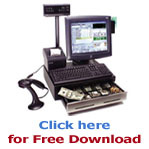Consumers are less likely to recommend a store if they’ve tried to return merchandise and walked away dissatisfied from that experience, according to a nationwide telephone survey of 1,024 people conducted by Opinion Research Corporation. “Easy returns are important in demonstrating flexibility and good will” on the behalf of the retailer, says Linda Shea, senior vice president and global managing director of customer strategy at Opinion Research.
To keep you out of the ranks of the dissatisfied, we’ve compiled a cheat sheet that details the return policies of some of the largest U.S. retailers of home products. The information could help you avoid a bad experience if you need to return an air conditioner that’s the wrong size or a gallon of paint you don’t need.
A number of retailers have made their return policies stricter. “Retailers examine and reevaluate their policies all the time,” says Scott Krugman, a spokesman for the National Retail Federation, a trade group. “They balance the needs of the customers and also consider whether the policy is being abused [by consumers].” Wal-Mart, for example, toughened its policy several years ago and implemented a return-tracking system that signals cashiers when customers have returned more than three items without receipts within 45 days. Managers at the retailing behemoth’s stores must approve returns signaled by the system.
After analyzing the policies of its competitors, Sears changed its return policy in late 2005 by tacking on a 15 percent restocking fee for some appliances, tools, and lawn and garden products that don’t contain all the original packaging and can’t be resold as new.
Costco, the warehouse-club giant, takes a more liberal approach to returns. The retailer claims that, with few exceptions, shoppers can return items at any time. The company even refunds shipping fees for items purchased online. Still other retailers, including Home Depot, Lowe’s, and Target, either do not require receipts or they use systems that trace purchases made with checks or credit and debit cards.
HOW TO AVOID RETURN HASSLES
Check the return policy. You’ll typically find the return policy for each retailer on signs near the checkout registers, on receipts, and on its Web site. Note the number of days you have to return items, policy exceptions, and whether restocking fees apply. If you buy and return items online, be aware that many merchants do not refund the cost of shipping, and you’ll probably have to pay the return postage. To avoid the inconvenience and cost of returning by mail, see if you can return your online purchases to a walk-in store. The chart below details this type of information.
Save the receipt. Not all retailers allow you to make returns without receipts. In some cases you’ll receive store credit, which could be based on a selling price lower than what you paid. To facilitate returns, hang onto receipts until warranties expire or for seven years if you need receipts to support tax returns.
Open with care. You might not be able to return some items, such as electronics, if you’ve opened the box and the products are not defective or if they’re not in their original packaging with all of the paperwork.














